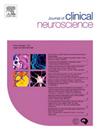Learning effect on door-to-needle time for telemedicine-administered thrombolytics in acute ischemic stroke: A frequentist analysis from a rural stroke network in the Midwest
IF 1.9
4区 医学
Q3 CLINICAL NEUROLOGY
引用次数: 0
Abstract
Background and Purpose
Telemedicine technology in acute stroke care is utilized in underserved areas to allow remote neurology specialists to rapidly evaluate acute stroke patients and make clinical decisions regarding thrombolytic therapy. This work aims to describe the learning curve of door-to-needle time (DTN) in telemedicine-administered thrombolytics in a rural stroke network of the Midwest.
Methods
This is a retrospective analysis of thrombolytics administered via telemedicine for acute ischemic stroke at three rural hospitals within the Southern Illinois Healthcare network between July 2017 and August 2024. Demographics, medical history, clinical presentation, time of evaluation, severity of stroke, neuroimaging, and laboratory testing were reviewed. Major technology upgrades were noted. Providers entering the telestroke system did not receive formalized training; however, DTN performance was included in physicians’ quality metrics, which contributed to gradual learning and improvement. Outcome measure was DTN. A linear regression model was fitted using the ordinary least squares (OLS) method to estimate the effect of sequential telemedicine encounters and preselected co-variables on DTN. A risk-adjusted cumulative sum chart (RA-CUSUM) was plotted to demonstrate the cumulative sum of probability of achieving DTN within 60 min by sequence of encounters. P value was set at 0.05.
Results
This study included 170 telemedicine-administered thrombolytics. Once adjusted for age, systolic blood pressure, NIHSS, and time of evaluation, the sequence of telemedicine encounters was independently associated with DTN (B: −0.086, 95 %CI: −0.169, −0.03, p = 0.04). RA-CUSUM demonstrated a learning curve that was irregularly associated, but not invariably, with new providers beginning to use telemedicine and major technology upgrades. The learning curve followed cycles of steep learning, followed by semi-plateau phases, each lasting approximately 40 encounters. Probabilistically, every 10 encounters lowered the DTN by 42 s. Statistically, 98 encounters were needed to predict DTN to be within 60 min.
Conclusions
In our stroke network, we identified a learning effect on the DTN in telemedicine-administered thrombolytics. The learning curve occurred at three levels: 1) system level of the network, 2) provider experience, and 3) improvement in the technology. Our experience suggests that provider learning and system enhancements may drive improvements in DTN, but additional studies are needed to assess generalizability to other telestroke networks.
求助全文
约1分钟内获得全文
求助全文
来源期刊

Journal of Clinical Neuroscience
医学-临床神经学
CiteScore
4.50
自引率
0.00%
发文量
402
审稿时长
40 days
期刊介绍:
This International journal, Journal of Clinical Neuroscience, publishes articles on clinical neurosurgery and neurology and the related neurosciences such as neuro-pathology, neuro-radiology, neuro-ophthalmology and neuro-physiology.
The journal has a broad International perspective, and emphasises the advances occurring in Asia, the Pacific Rim region, Europe and North America. The Journal acts as a focus for publication of major clinical and laboratory research, as well as publishing solicited manuscripts on specific subjects from experts, case reports and other information of interest to clinicians working in the clinical neurosciences.
 求助内容:
求助内容: 应助结果提醒方式:
应助结果提醒方式:


